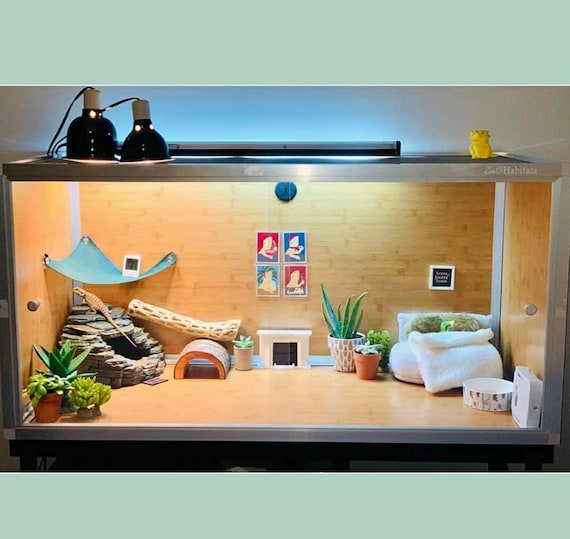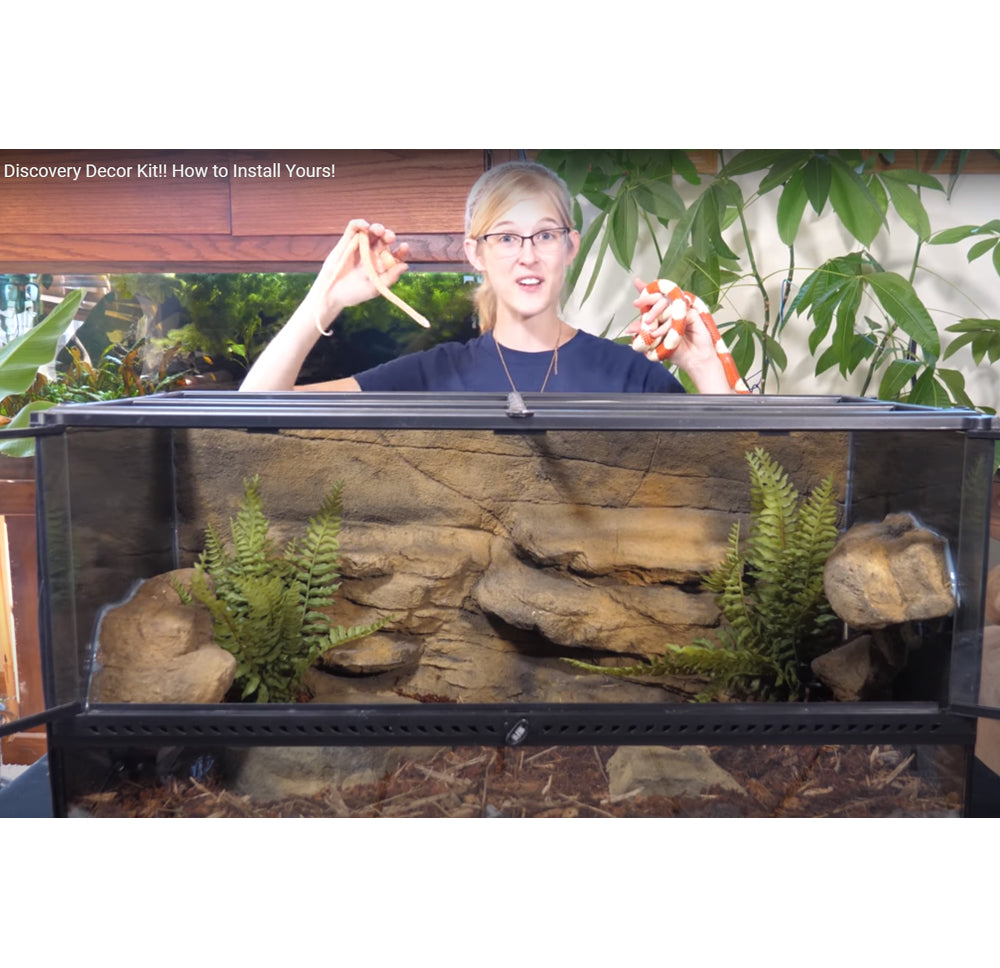As a passionate reptile enthusiast, I’ve spent countless hours perfecting the art of reptile tank decoration. A well-decorated tank not only enhances the aesthetic appeal of your home but also provides a suitable environment for your beloved pets. Whether you’re a beginner setting up your first tank or a seasoned hobbyist looking to refresh your setup, this comprehensive guide will help you navigate the exciting world of reptile tank decoration.
Understanding Your Reptile’s Needs
Before diving into the nitty-gritty of decoration, it’s crucial to understand the specific needs of your reptile species. Each reptile has unique preferences regarding habitat, temperature, humidity, and even hideouts. Here are some key considerations:
Temperature and Humidity
Your chosen decor should help maintain the ideal temperature and humidity levels in the tank. For instance, some reptiles thrive in high humidity, while others prefer dryer conditions. Using materials that retain moisture can be beneficial for species like green tree frogs or bearded dragons.
Space and Area Requirements
Consider the space your reptile requires. Some reptiles like ball pythons need ample ground space, while others such as geckos may prefer vertical space to climb. Always ensure your decorations do not overcrowd the tank.
Natural Behavior
Reptiles benefit from an environment that mimics their natural habitat, promoting natural behaviors like climbing, hiding, and exploration. Incorporate features that reflect their wild counterparts’ environments to encourage healthy activity.

Choosing the Right Decor Materials
The materials you select for your reptile tank not only influence the look of the habitat but also the well-being of your reptile. Here’s a breakdown of common decor materials and their benefits.
| Material | Benefits | Considerations |
|---|---|---|
| Wood (Cork, Driftwood) | Natural look, provides climbing chances, retains humidity | Ensure it’s dry and free from pesticides |
| Rocks and Stones | Durable, can provide basking spots, enhances aesthetics | Heavy, ensure they are securely placed to avoid collapse |
| Plastic Plants | Low maintenance, available in various styles | May not provide the same benefits as real plants |
| Live Plants | Improves air quality, provides hiding spots, natural look | Requires care and appropriate lighting conditions |
| Substrates (Coconut fiber, Sand, Gravel) | Enhances aesthetics, provides burrowing opportunities | Choose based on species and cleanup ease |

Creative Decoration Ideas for Your Reptile Tank
Now that we understand the fundamentals, let’s explore some creative decoration ideas that will make your reptile’s home stunning!
1. Naturalistic Terrariums
Create a naturalistic environment by integrating real plants, rocks, and logs. This not only mimics their natural habitat but also encourages natural behaviors.

Popular Plants for Reptile Tanks
- Pothos: Low light needs and hardy.
- Spider Plant: Air-purifying and easy to grow.
- Snake Plant: Tough and tolerant of neglect.
2. Themed Decor
Consider creating a themed habitat. Whether it’s a desert landscape for a desert tortoise or a rainforest setup for a ball python, themed decor can be visually striking.

Desert Theme Decor
- Sand substrate
- Rock formations
- Succulent plants
Rainforest Theme Decor
- Moist substrate (coconut fiber)
- Driftwood and branches for climbing
- Live tropical plants

3. Hides and Shelters
Providing hides is essential for your reptile’s comfort. Utilize caves, logs, or commercially available hides, ensuring they match the decor theme.
Top Hide Options
- Cork bark tunnels
- Commercial reptile hides
- Natural rocks with crevices

Pros and Cons of Various Decor Types
Natural vs. Artificial Decor
| Aspect | Natural Decor | Artificial Decor |
|---|---|---|
| Aesthetic Appeal | Very realistic, enhances natural feel | Variety in colors and shapes available |
| Maintenance | May require regular upkeep (cleaning, pruning) | Low maintenance, easy to clean |
| Health Benefits | Supports natural behaviors, can improve air quality | Less beneficial for natural behaviors |
| Cost | Sometimes more expensive due to sourcing | Usually lower cost options available |

Lighting Considerations for Your Reptile Tank
Proper lighting is vital in replicating a reptile’s natural environment. It helps regulate their circadian rhythms and supports their physiological processes.
Types of Reptile Lighting
- UVB Lighting: Essential for reptiles’ metabolic processes, particularly for calcium absorption.
- Heat Lamps: Provide the necessary warmth for basking species.
- LED Lights: Efficient lighting that can enhance visual appeal without excessive heat.
Setting Up the Tank: Step-by-Step Guide
Now that you have a wealth of ideas and materials, let’s go through the process of setting up your reptile tank step by step.
Step 1: Choosing the Right Tank Size
Select a tank size appropriate for your reptile species. A larger tank generally offers better living conditions. For instance, a juvenile ball python may thrive in a 40-gallon tank, while an adult may require a 75-gallon or more.
Step 2: Laying the Substrate
Choose a substrate type that caters to your reptile’s needs. For instance, use sand for a desert species and coconut fiber for a rainforest species. Spread the substrate evenly across the bottom of the tank, typically 2-3 inches deep.
Step 3: Arranging Decor
Start arranging your decorations, keeping in mind the needs for space, temperature gradients, and hiding spots. Aim for a balanced layout that provides both open space and shelter.
Step 4: Adding Plants and Hides
Carefully introduce your live plants (if applicable) and hides. Position plants securely and provide enough space for your reptile to navigate easily.
Step 5: Installing Lighting and Heating
Set up your lighting and heating mechanisms, ensuring they are positioned safely to avoid contact with decor. Always follow manufacturer guidelines for installation.
Step 6: Monitoring Conditions
Utilize thermometers and hygrometers to monitor temperature and humidity levels. Make adjustments as necessary to maintain the ideal environment.
Maintenance Tips for a Beautiful Habitat
Maintaining your reptile tank keeps it looking its best and ensures a healthy environment for your pet. Here are some maintenance tips:
- Regularly check and clean decor to prevent mold and algae buildup.
- Replace or prune live plants as needed.
- Perform routine water changes if using a water feature.
- Use a siphon to clean substrate and remove waste.
FAQs About Reptile Tank Decoration
What materials are safe for reptile tanks?
Safe materials include natural wood, rocks, ceramic, and specially designed reptile decor. Avoid materials that can leach toxins or splinter.
How often should I rearrange my reptile’s tank decor?
It’s not necessary to frequently rearrange decor; however, consider doing so every few months to stimulate your reptile’s environment and encourage exploration.
Can I use regular houseplants in my reptile tank?
No, many houseplants are toxic to reptiles. Always choose non-toxic plants specifically suited for reptile enclosures.
How do I clean my reptile tank decorations?
Use warm water and a gentle brush to clean decorations. Avoid harsh chemicals. Rinse thoroughly and let air dry before placing them back in the tank.
Is it necessary to provide hiding spots for my reptile?
Yes, hiding spots are crucial for a reptile’s mental health and well-being, offering them security and reducing stress.
Conclusion: Personalized Touches for Your Reptile Tank
Decorating a reptile tank is a rewarding experience that enhances both the aesthetics of your home and the quality of life for your reptile. Take the time to research and understand your pet’s unique needs, and let your creativity flow in designing a beautiful habitat. Remember, each tank tells a story—let yours reflect the environment your scaly friend deserves!